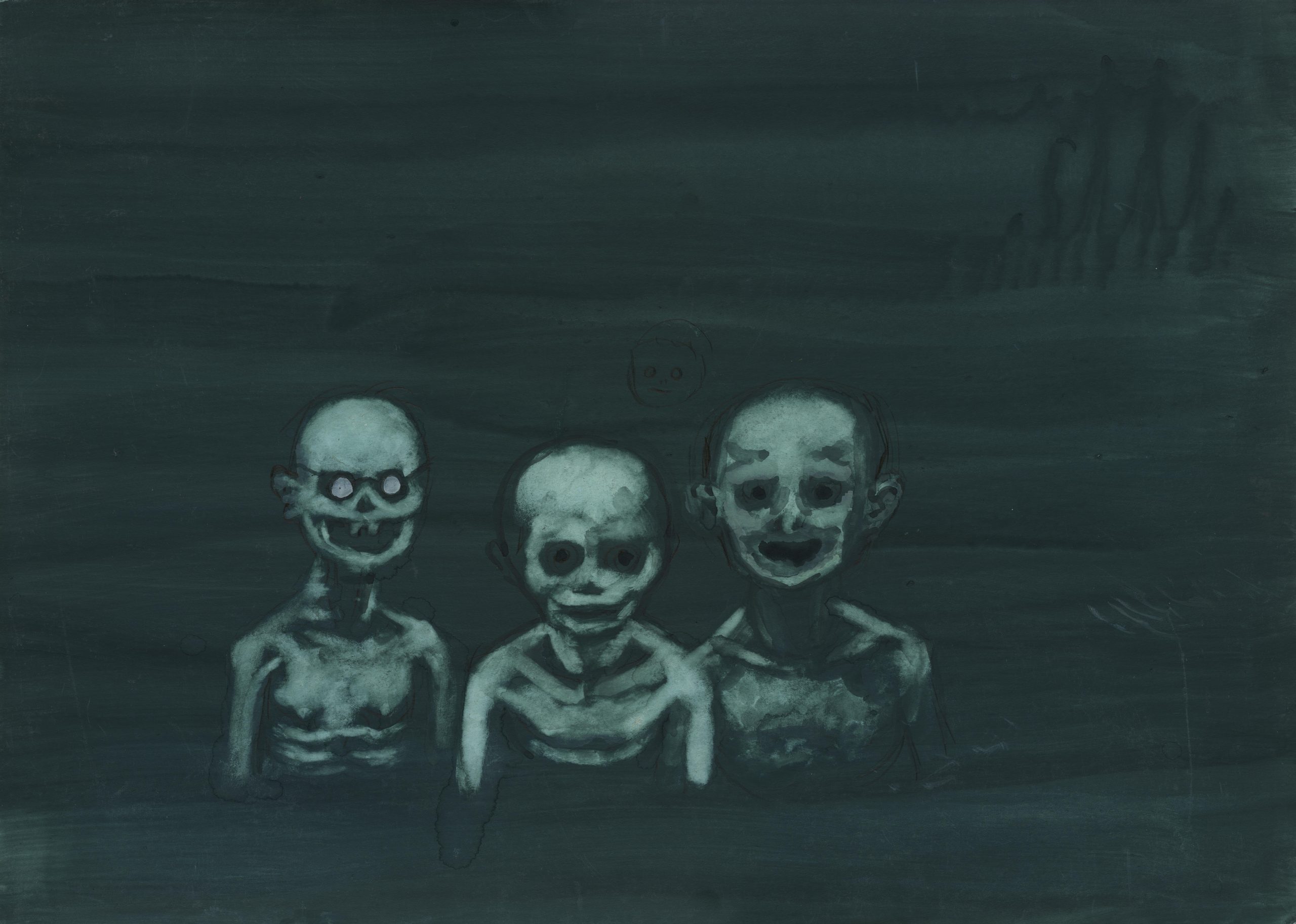
A version of this text was published as part of a longer essay accompanying the exhibition The Dark Arts. Aleksandra Waliszewska and Symbolism from the East and North at the Museum of Modern Art in Warsaw. Bringing together over 200 works by 42 artists from Poland, Ukraine, Czech Republic, and the Baltic states, this exhibition unpacked Waliszewska’s unusual, intensive dialogue with the fin-de-siècle Symbolist movement, particularly focusing on the culturally-specific subjects she shares with her Eastern and Northern predecessors. Like her Symbolist forbears, Waliszewska’s art is invested in the metaphorical meanings behind her visual narratives, allowing her to dissect the complexities of the human condition. The exhibition’s transhistorical dialogue aimed to offer a deeper context to Waliszewska’s preoccupation with mythological tropes, apocalyptic scenarios, and charged Balto-Slavic landscapes.
The Dark Arts proposed a revisionist reading of the fin-de-siècle, a shift in the art historical canon from the dominance of largely French and Austrian artists towards a more expansive consideration of the Symbolist legacy. In Western Europe, the advent of Symbolism – dubbed ”the art of ideas"
With the Symbolist movement’s emphasis on liberating creative expression, we gain insight into the complex intermingling of art, identity, and indigeneity. The latter is a term that may be understood as the ”self-identification of communities and persons, which emerges from the relations to the soil, water, and one another."
Despite these demographic shifts and transformations, folk traditions persisted in songs, legends, and crafts animating cultural collectives and artistic endeavours, while at the core of the Balto-Slavic symbolist imaginary, the anxiety-ridden landscape spread, with its supernatural inhabitants. Regional Slavic cosmologies, where magic often merged with reality, consider woodlands places of holy worship. Religious rites were performed among birches, oaks, and willows, while felling a sacred tree was a great sin and misfortune. These cosmologies created the backdrop to multi-ethnic religious practices syncretising Christianity, Islam, and Judaism with cycles of nature and countryside deities. Forest and swamp formed a vernacular space in the common imaginary, as described in historian Kate Brown’s analysis of merging physical and magical landscapes across multi-ethnic borderlands comprising today’s Poland, Belarus, and Ukraine in the period shortly before the Bolshevik revolution: ”Unclean forces [...] took the form of spirits of the house, the stream, forest, and swamp, as well as of the walking dead.”

Sirens, skeletons, reptilian femme fatales, zombies, and other lost souls: in Waliszewska’s oeuvre, the swamp and forest is a tense, enigmatic space, inhabited by a supernatural bestiary, where unusual encounters between life and death occur. In this Hades-esque universe, even the landscape plays an important role: it reciprocates our gaze, becoming an active participant in the ongoing process of decay. Its psychedelic, secretive atmosphere conveys a sense of impending catastrophe. Yet muddy slime is also where desires are fulfilled. In folktales and popular novellas, wetlands predominate as a motif with demonic connotations. Bogs, marshes, and quagmires, with their spatial poetics, were traditionally believed to be dangerous, ambiguous places. Marshes were thought to be terrain that was unclean, empty, and useless, which seems to be an effect of the pragmatism of farmers even into the 20th century, who saw these undeveloped stretches as the antithesis of arable land.
One could argue that these swampy, forested borderlands became a highly mythologised site over the centuries because of their ungovernability. Although primordial Eastern European forests and swamps have resisted Soviet agrarian reforms and capitalist development alike, these unruly reserves have never been neutral geographic locations. Swamps and forests evolved into mourning sites, infused with meaning: silent witnesses to the ethnic cleansing of Jewish and Romani minorities, to the sexual terror of war victims, to the military displacement of indigenous populations across the bloodlands between Russia and Germany, as the historian Timothy Snyder has termed this territory during the Second World War, where uncounted graveyards testify to that and other wars that passed over its wild frontiers. In our day, the Slavic forest and swamp, with its holy sites, wood nymphs, and spirits, has become a charged landscape on which military and paramilitary violence is being enacted, where grassroots activists and paramedics search the Białowieża forest reserve for refugees at peril, stranded by legal protocols along the Polish-Belarusian border.

Waliszewska’s work meanders through these tricky realms, never falling into didactic literalism. As with her Polish, Czech, Ukrainian, and Baltic Symbolist forebears, Waliszewska’s work engages specific regional landscapes and topographies, and the common mythologies that fuelled Symbolism’s incarnations in Eastern and Baltic countries. Primeval forests, murky swamps, and agrarian landscapes with identifiable Slavic hallmarks appear as backdrops for Waliszewska’s figures, and are key protagonists in her narrative compositions. echoing the foreboding fairy-tale landscapes of Mikalojus Konstantinas Čiurlionis, the Lithuanian master, and spooky Latvian forests recurring in Rihards Zariņš’ oeuvre, Waliszewska embraces a symbolist insistence on specificity, and on the power of indigenous landscapes, in her resolutely identifiable Balto-Slavic settings.

But unlike her predecessors from the previously partitioned and colonised lands of the East and North, Waliszewska does not infuse her paintings with mythical heroes and romantic folklore. Though imbued with poetic symbolism, hers are not the ordinary landschafts. There is something indisputably contemporary and uncanny in her enchanted landscapes: a gothic, a glitch, a shadow area between fear and ecstasy. One is almost tempted to think of these swampy forests as an offshore formation, through the concept of black shoals, proposed by Tiffany Lethabo King, who used this term as a metaphor and mode of critique to theorise the encounter between Black studies and Native studies. As she writes, ”Black shoals’ unpredictability exceeds full knowability/ mappability and in some senses it is what Sylvia Wynter and Katherine McKittrick would call a ‘demonic’ space. Because the shoal’s shape, expanse, and density change over time, the shoal is as much a dynamic and moving set of processes and ecological relations as it is a longitudinal and latitudinal coordinate that cartographers attempt to fix in time and space.”
